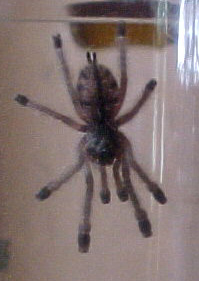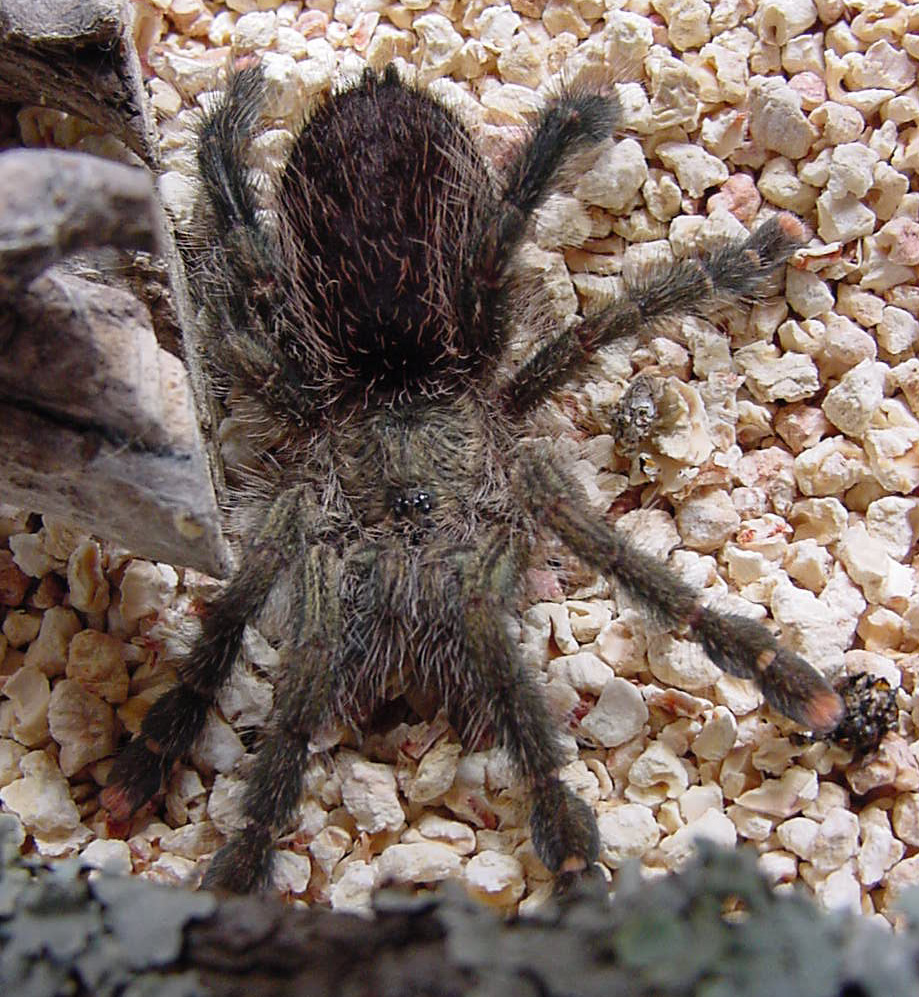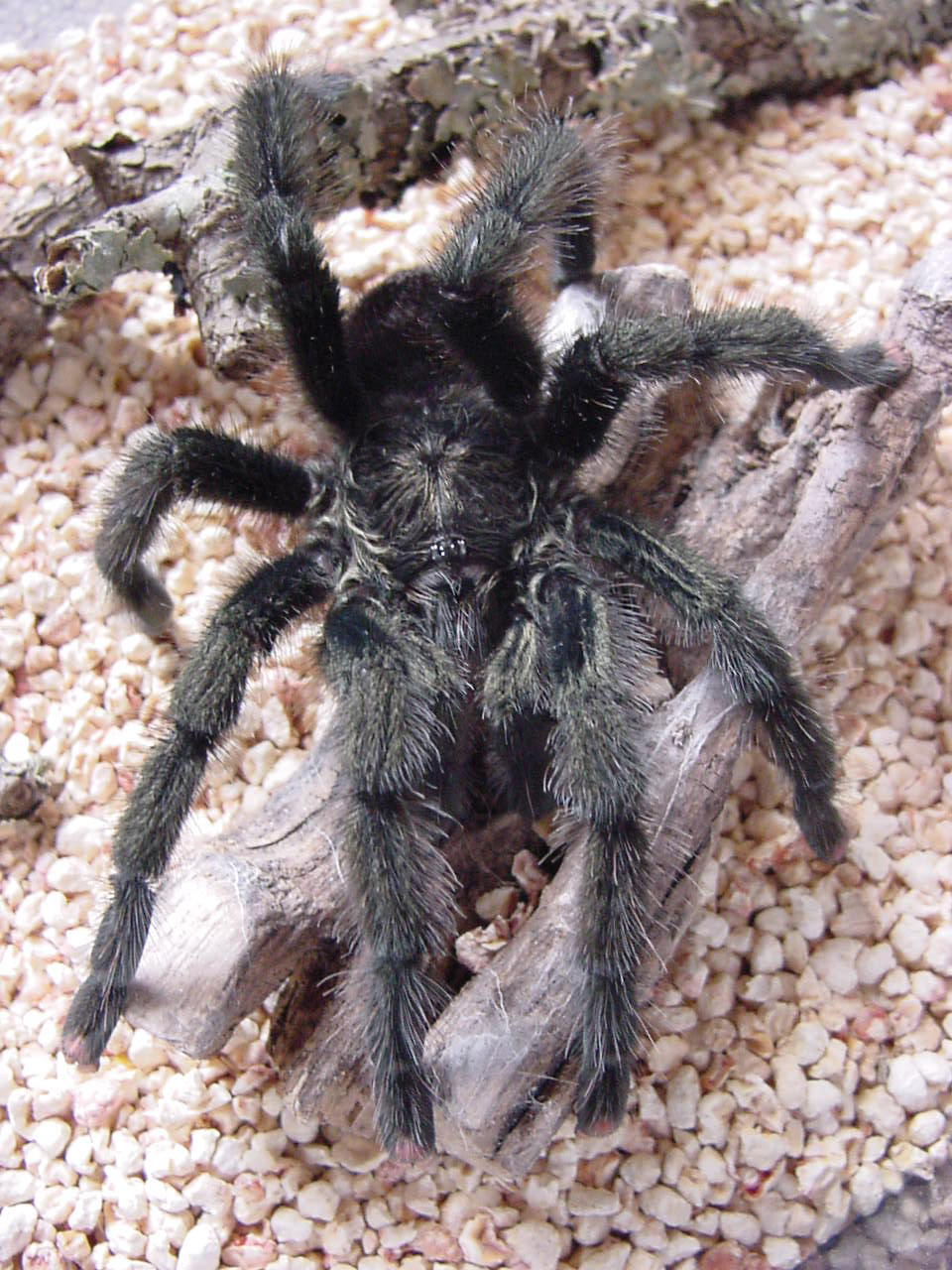


For the love of spiders...



For the love of spiders...
"Why do you like
spiders so much?"
I get asked
that question a lot. So -- honestly -- how could I love a creature so often
despised and feared by others? Because they're so fascinating and beautiful,
that's why.
As a child,
I remember flinching at the sight of a huge yellow garden spider hanging
upside down on her orb web at my great-aunt's home in Wimberley, Texas.
She just looked so SCARY. When I grew a little older, though, I befriended
small jumping spiders that would live in our mailbox on the street. Now
and then, one would appear in my bedroom. With its big eyes, it'd watch
me walk around the room with rapt attention. I must confess that I'd even
talk to my eight-legged friends. Sometimes I named them, too.
My interest
in spiders continued in adulthood. A few years ago, I decided -- since
I enjoyed spiders so much -- I'd read and learn all I could about them.
In the time since, I've accumulated an extensive spider reference library
of books. In my spare time, I photograph them. As a result of my spider
studies, I've learned enough to consider myself a spider naturalist. Just
ask, and I'll tell you all about them!
And oh, yes,
I keep and raise spiders of different species, right here at my desk. They
make wonderful companions. Honest!
To read more about spiders, see my article, "The Myth-conceptions About Spiders."
![]()
My tarantula children:
These are two of three
pinktoed tarantula spiderlings I raised from penny-sized spiderlings, starting
in October 1999. Avicularia aviculariais an arboreal (tree dwelling)
species that's native to South America. Tarantulas are slow growing and
long lived. Sadly, Yogi did not survive his/her eighth month and died in
August 2001. Lucky and C.B. -- both males -- molted a total of 11 times,
then died respectively in May and August 2002. I miss them.
I also try to keep
live brown recluse specimens to show people when I give spider presentations.



Yogi, July 2000 (top side)
Yogi, July 2000 (bottom side)
Lucky, April 2001

Lucky, January 2002
![]()
Some spider trivia:
* Female tarantulas have been known to live in captivity for more than 25 years.
* A thread of spider silk can be three times stronger than a thread of steel the same size.
* Jumping spiders have been found as high as 22,000 feet on Mount Everest, the highest elevation at which any animal has ever been discovered.
* Until the end of the 1700s, spiders were considered to be wingless insects.
* An orb web, shaped like a spoked bicycle wheel, can contain 20 yards of silk.
![]()
Spider reference books:
A Field Guide to Spiders and
Scorpions of Texas, John A. Jackman (Gulf Publishing Co.)
A great reference
guide for us Texans.
Spiders and Their Kin,
Herbert W. Levi (Guide Press).
Good basic guide
for children and adults.
The Biology of Spiders,
Rainer F. Foelix (Oxford University Press).
Considered to
be the textbook on spiders. Very advanced reading.
How to Know the Spiders,
B.J. Kaston (WCB McGraw-Hill).
Use this
book for keying out spiders.
The Spider, John
Crompton (Nick Lyons Books).
A wonderful
read on spiders.
Spiders of the World,
Rod and Ken Preston-Mafham (Blandford).
Identifying Spiders,
Rod and Ken Preston-Mafham (Chartwell Books).
The Book of the Spider,
Paul Hillyard (Random House).
The Common Spiders of the
United States, James H. Emerton (Dover).
The Tarantula Keeper's Guide,
Stanley A. Schultz and Marguerite J. Schultz (Barron's).
The best guide,
I think, on keeping tarantulas and other spiders, too.
![]()
Contact me if you'd like me to speak
about spiders to your class or group:
sherylsr@moment.net